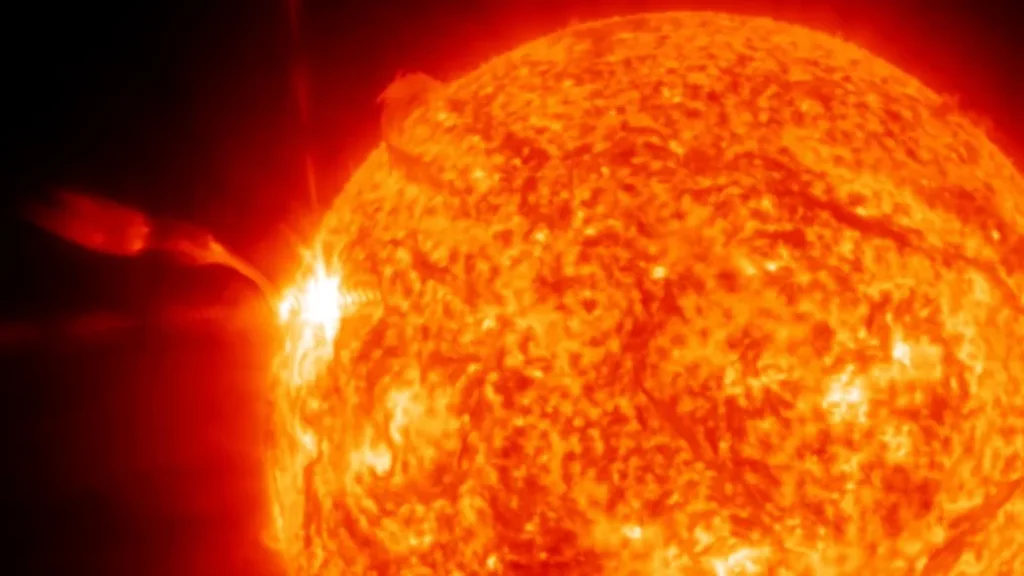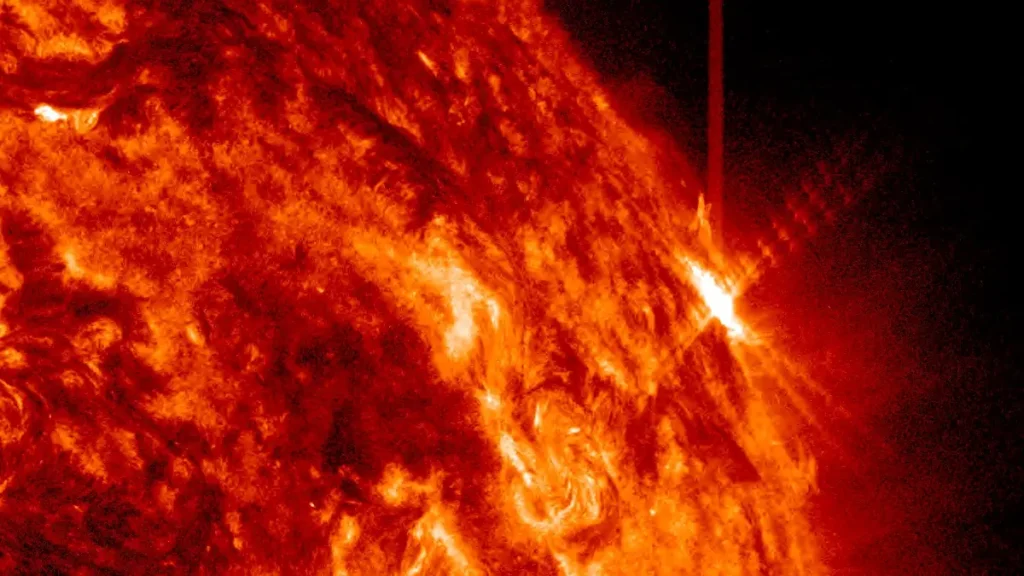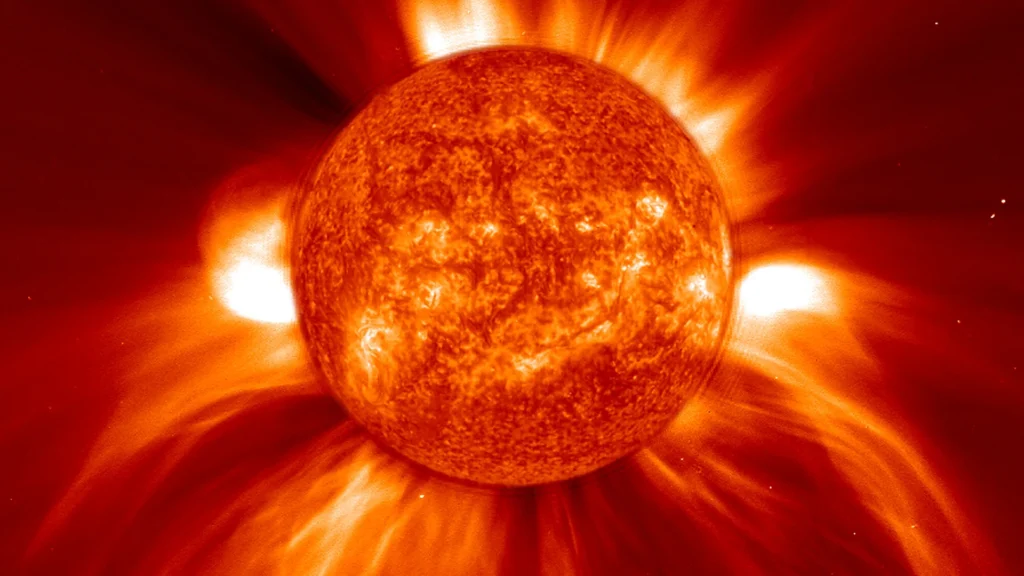On May 14, 2025, the Sun unleashed its most powerful solar flare of the year so far—an intense X2.7-class eruption—causing brief but noticeable disruptions in radio communications across Europe, Asia, and the Middle East. The flare originated from the highly active sunspot region AR3664, which has been closely monitored due to its rapid development and potential for strong solar activity.
This X2.7-class solar flare ranks among the strongest in the current solar cycle. Solar flares are categorized by intensity using a letter scale: A, B, C, M, and X, with each letter representing a tenfold increase in energy output. An X-class flare is the most energetic, and this particular one, though on the lower end of the X-class scale, still had a notable impact on Earth’s ionosphere.
Importantly, the flare was not directed at Earth in terms of a coronal mass ejection (CME), meaning that no significant geomagnetic storm or long-lasting radiation impact was expected. However, during the eruption itself, the intense release of X-rays did interact with Earth’s upper atmosphere, causing a shortwave radio blackout classified as R3 (strong) on NOAA’s radio blackout scale. These blackouts are caused by X-rays rapidly ionizing the Earth’s dayside ionosphere, especially affecting the 3 to 30 MHz high-frequency radio bands used by aircraft, ships, and ham radio operators.
The resulting communication disruption lasted several minutes and was primarily felt in regions facing the Sun at the time, particularly across large portions of the Eastern Hemisphere. Pilots, maritime operators, and military communications personnel in those regions may have experienced signal loss or degradation.
NASA’s Solar Dynamics Observatory (SDO) captured dramatic images and ultraviolet footage of the eruption, highlighting the extreme energy release from the Sun’s surface. Scientists continue to observe AR3664 for further activity, though current assessments indicate no immediate threat from follow-up flares or CMEs associated with this event.
This solar flare occurred during what is expected to be the peak of Solar Cycle 25, forecast to reach maximum activity between late 2024 and early 2026. During solar maximum, the frequency and intensity of sunspots, flares, and coronal mass ejections increase significantly. Space weather experts warn that while this flare did not pose a major threat, it serves as a reminder of the Sun’s potential to impact Earth’s technological infrastructure—especially communication and navigation systems.
With the increasing reliance on satellite-based systems and high-frequency radio communications, even short-term solar events like this underscore the importance of space weather forecasting and rapid-response protocols. Agencies such as NOAA and ESA continue to work closely with international partners to monitor solar activity and provide real-time alerts to industries and governments potentially affected by solar phenomena.
As of now, no CME has been confirmed in association with the May 14 flare, and no further radio blackouts are anticipated. However, with sunspot AR3664 still active and facing Earth, more flares could follow in the coming days.









